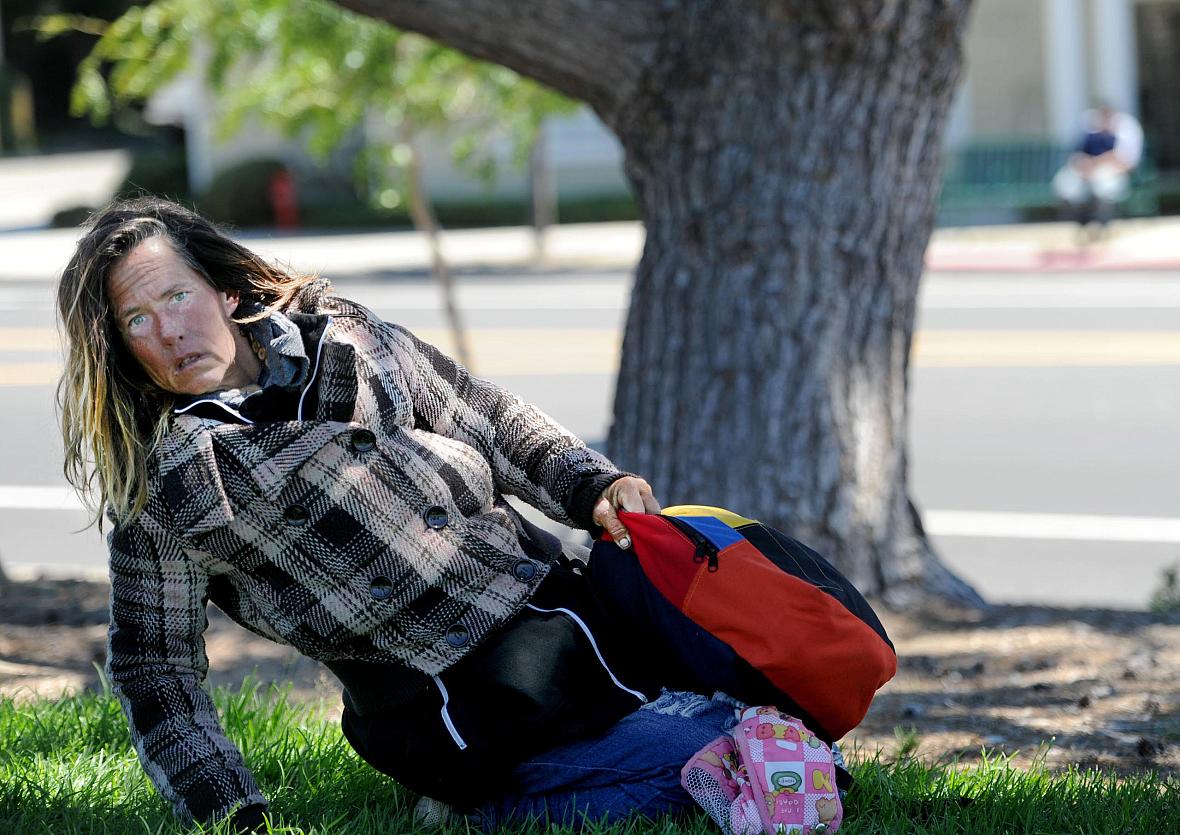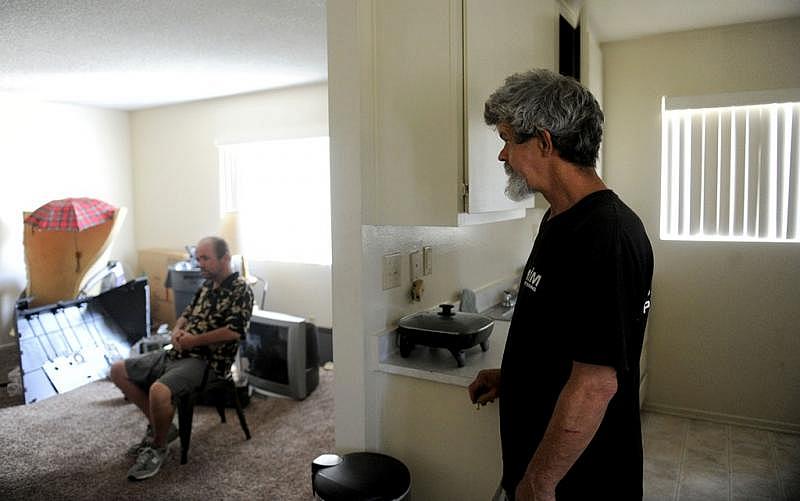Affordable housing is key to helping homeless (Part 3)
Claudia Boyd-Barrett is a Southern California-based freelance journalist with an interest in healthcare, poverty issues, immigration and local government. She reported this project as a 2015 California Health Journalism Fellow at the University of Southern California’s Annenberg School of Journalism. Boyd-Barrett currently writes for the Ventura County Star, the California Health Report, and the Jewish Journal of Greater Los Angeles.
Other stores in the series include:
Some chronically homeless people haunted by mental health issues (Part 1)
Agencies struggle to help homeless who resist services (Part 2)
Challenges double when reporting on homelessness and mental health, but a few tips can help

When Daryl McGee first took up residence on the Ventura Pier, Bill Clinton was president, New York’s twin towers were still standing and the Internet was barely a “thing.”
For about two decades, the learning-disabled man survived on the iconic wooden outcrop, said caseworker Fariborz “Hank” Koozehkanani, of the Ventura nonprofit group Project Understanding. He fished for food, cooked on a camping stove and drank his days away.

Today, McGee, 48, is adjusting to a new kind of life in an apartment in Montalvo. He sleeps in a bed, has a refrigerator to store food and has a restroom when he needs one.
“It’s pretty much fun staying here, it’s nice,” McGee said.
He and another disabled man he shares the apartment with were helped through an approach known as Housing First. The concept is to move chronically homeless people into permanent housing as the first step to stability.
Older approaches required homeless people to achieve sobriety or enter a treatment program before being moved into permanent housing. Under Housing First, people receive support to stay in their homes and later are connected with services such as health care, substance abuse treatment, education and job counseling.
McGee’s rent and utilities are paid for out of $860 a month he receives in federal disability benefits. Project Understanding covers the cost of his caseworker through a mix of government funding and private donations. Koozehkanani said he also brings McGee donated food.
PROVEN PRACTICE
Housing First has proved successful in other parts of the country, rapidly moving people off the streets, particularly the longtime homeless and the mentally ill. Studies show it also saves taxpayers millions of dollars on emergency hospitalizations, jail stays, sobering facilities and temporary shelters.
Los Angeles County, which has a large homeless population, has also embraced Housing First. Under a program called Housing for Health, the county’s health department has housed almost 1,000 chronically homeless people in affordable housing developments or in private units that accept federal housing vouchers.
Each person housed saves the county $32,000 per year by dramatically reducing emergency room visits and hospital stays, said program manager Connor Johnson. The county plans to house a total of 10,000 people in the next few years.
When “They’re in housing and their health needs are being addressed…that’s a savings for the county in addition to being the right thing to do,” Johnson said.
Ventura County’s Continuum of Care board, which oversees distribution of just under $2 million a year in federal funds for homelessness, is pushing agencies to implement Housing First.
The idea is once people’s basic needs for shelter, food and safety are met, they can better focus on improving their lives.
“The wrong conversation that you hear a lot is, ‘We’ll help the people who want to be helped’…it’s not fair to say that about some of these folks who are chronically homeless, because they’re just trying to survive,” said continuum of care coordinators Tara Carruth.
McGee, for example, now drinks about a 10th of what he used to when he lived on the pier, said Koozehkanani. He said he is working to persuade McGee to see a doctor, because he believes the formerly homeless man uses alcohol to self-medicate for schizophrenia.
Meanwhile, his roommate, Monty Monkress, 50, now receives regular medical care instead of constantly ending up in the emergency room when he was homeless. He said he used to drink until he passed out, because being homeless made him feel isolated and depressed.
“I’m feeling pretty good,” he said. “I don’t have to worry where I’m going to sleep or if somebody’s going to kill me.”
Daryl McGee (left), 48, was living at the pier for the past 20 years and his roommate Monty Monkress (right), coming down the stairs, are now off the streets and share an apartment.
NEED FOR HOUSING
Many officials agree the Housing First model is effective, but they note that first you need housing.
With Ventura County’s sky-high rents, an apartment vacancy rate as low as 3 percent and long waiting lists for subsidized housing, finding an affordable place is difficult for many people. For the homeless and those trying to help them, it can be almost impossible.
“It’s the biggest struggle we face,” said Joe Dawson, who works for Ventura’s Homeless to Home program, a housing initiative run by three nonprofit groups.
Housing providers — typically nonprofit groups — offer permanent units with support services for the homeless. At last count there were 366 units, and usually those are full, said Carruth. That means agencies have to look to private apartments, which are too expensive, she said.
In Ventura, a social service task force study found no development of extremely low-income housing from 2006 to 2013, even though the state determined the city needed 430 such units. Over that same period, 84 percent of all new housing units were built for high-income households.
“We are creating homelessness,” said Judy Alexandre, chairwoman of the Task Force.
Despite the housing shortage, Carruth and Christy Madden, Ventura County’s senior deputy executive officer, said they are optimistic Housing First will work with creative housing solutions.
Local communities are looking at ideas such as repurposing nonresidential buildings and old motels, building tiny houses or converting shipping containers into homes, Carruth said.
“We have to look at everything, nothing is off the table,” Madden said. “It’s daunting, but I’m actually encouraged because I think this is a time of opportunity. It’s ripe for making systemic changes that are evidence-based and really generate some positive outcomes.”
[This story was originally published by Ventura County Star. Photos by Juan Carlo.]

